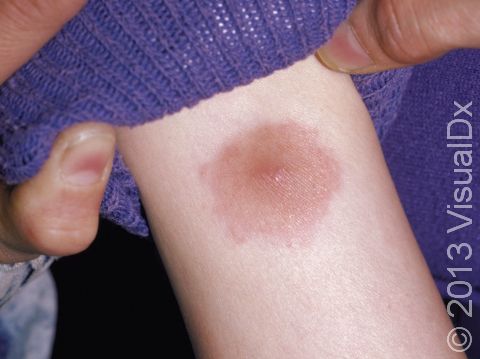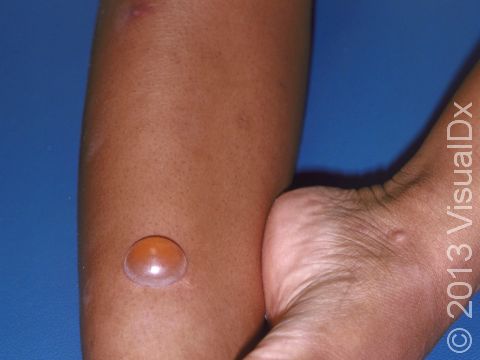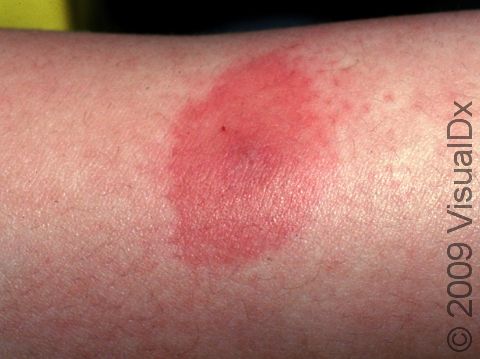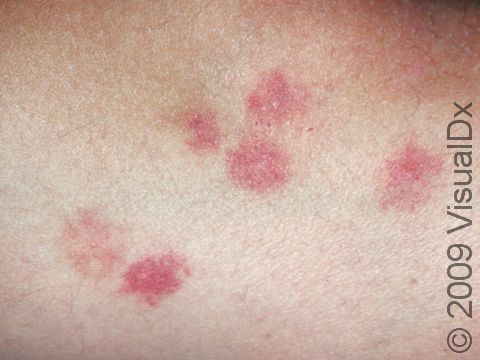Bug Bites or Stings, First Aid
Bites or stings from insects are very common. Most reactions are mild and occur due to an allergic reaction to either the insect or the toxins injected with the bite or sting. However, some people have severe reactions, such as to the stings of bees, wasps, hornets, and yellow jackets and to the bites of certain spiders. In the case of a severe reaction, emergency help may be needed.
The bites of most insects, such as ants, mosquitoes, flies, most spiders, ticks, and mites, do not cause such a severe reaction.
Who's At Risk?
Insect bites and stings are a problem in all regions of the world for people of all ages.
Race, ethnicity, and sex do not have any proven effect on bite reactions. However, some individuals clearly appear more attractive to insects, perhaps related to body heat, odor, or carbon dioxide excretion.
Signs & Symptoms
Insect bites usually present as small, itchy bumps that are either red or darker than the surrounding skin, with the occasional blister occurring. Some insects, such as fire ants, are known to cause painful, itchy, pus-filled bumps.
Flying insects tend to choose exposed areas not covered by clothing, while fleas, for example, tend to bite the lower legs. Bedbugs typically bite the head, neck, arms, and hands, often biting several times in the same area and leaving a group of lesions.
Common reactions to stings include:
- Redness, pain, and swelling.
- Severe reactions such as facial swelling, difficulty breathing, and shock (anaphylaxis).
- Fever, hives, and painful joints (although these reactions are rarer).
Very few spider bites cause severe reactions. The black widow spider may cause only a mild local reaction at the bite site, but pain, stiffness, chills, fever, nausea, and abdominal pain may follow within a few hours. Similarly, the brown recluse spider causes a significant skin reaction after a few hours, with redness, pain, blistering, and ulcers forming, as well as fever, nausea, and fatigue. Seek medical care for black widow spider and brown recluse spider bites.
Self-Care Guidelines
First Aid Guide
For stings:
- Bees often leave a stinger behind. Try to quickly and gently pull out the stinger or scrape the stinger off with a blunt object, such as a credit card.
- Wash the wound with soap and water.
- Apply an ice pack or cold water for a few minutes.
- Take acetaminophen for pain and an antihistamine (diphenhydramine or chlorpheniramine) for itching, as needed.
For insect bites:
- Wash with soap and water.
- Apply cool compresses.
- Use antihistamines to relieve itching and take acetaminophen for pain.
- Applying 1% hydrocortisone cream may help reduce the itching.
For ticks (still attached), see Tick Bites, First Aid.
Treatments
For insect bites, your medical professional may prescribe:
- Topical corticosteroids.
- Muscle relaxants, pain relievers, antivenin, antibiotics, or sometimes local surgery to relieve venomous insect bites.
For stings, your medical professional may prescribe:
- Antihistamines or corticosteroids.
- Epinephrine, antihistamines, corticosteroids, intravenous fluids, and oxygen for anaphylaxis.
- Injectable epinephrine or nasal epinephrine spray for those with known severe allergic reactions.
- Immunotherapy to reduce the chance of repeated severe reactions.
Visit Urgency
Some bites and stings are more dangerous than others. If a black widow or brown recluse spider bite is suspected, apply ice to the area and seek medical help. Symptoms of these bites include:
- A deep blue or purple area around the bite, often with a surrounding white area and a red outer ring
- Abdominal pain
- Headache
- Fever
- Fatigue
- Nausea
- Muscle stiffness
If the site of a tick bite develops a red, swollen, spreading area, seek medical help to check for Lyme disease.
Seek urgent medical care in the case of bites or stings causing:
- Swelling of the lips or throat.
- Tightness in the chest or difficulty breathing.
- Hoarse voice or tongue swelling.
- Dizziness or loss of consciousness.
Last modified on August 15th, 2024 at 1:53 pm

Not sure what to look for?
Try our new Rash and Skin Condition Finder




